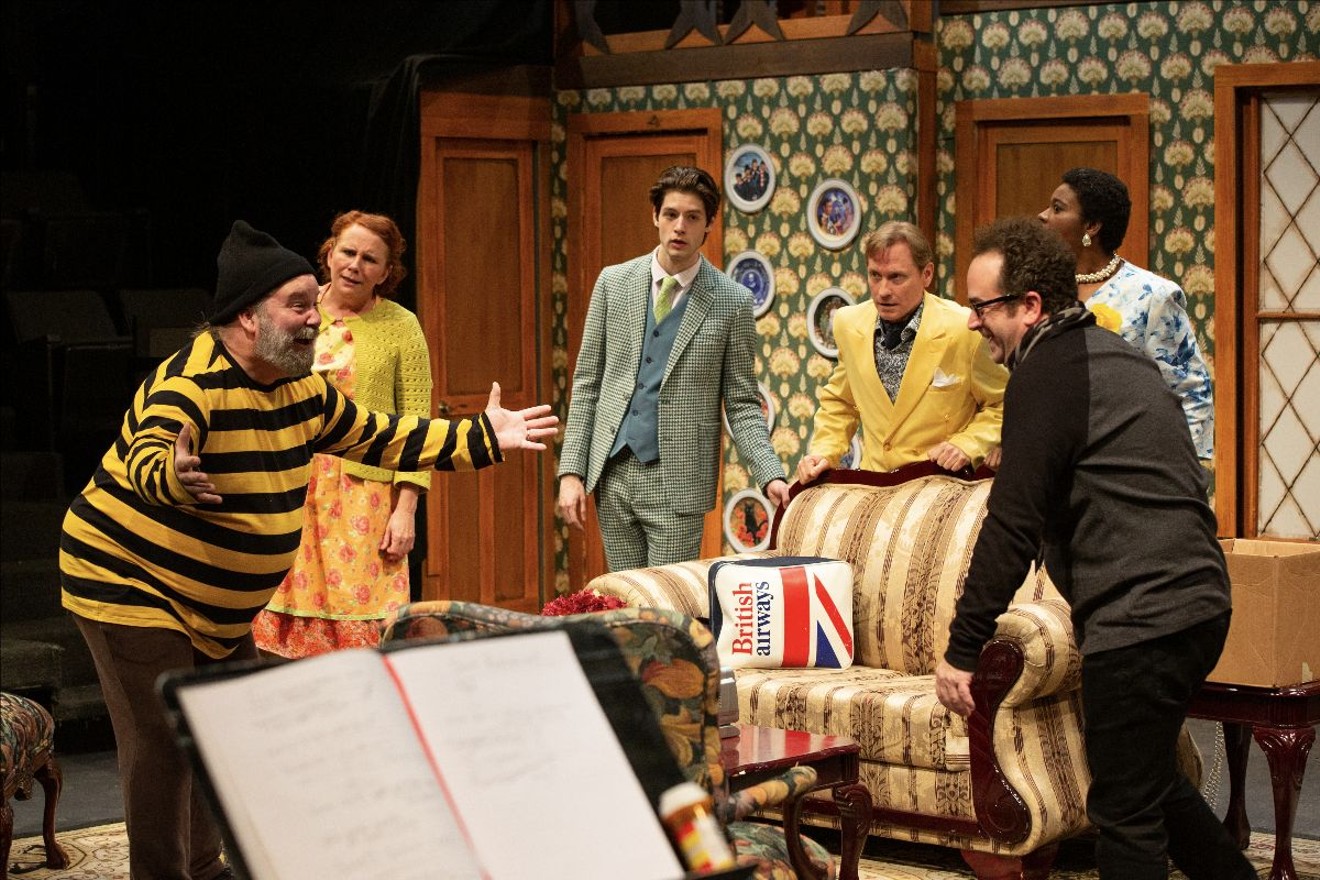Noises Off by Michael Frayn is one of those risky plays that tries to tell a story about theater by means of the medium of theater — risky because any meta story threatens to be esoteric, relying too heavily on material that only makes sense to those within the world. Noises Off, however, is perhaps the opposite: It draws the audience into the world of theater-making and makes us think we know more about the chaotic production process than we actually do.
The play follows a theater company through their production of the bedroom farce Nothing On, from the tremulous dress rehearsal to the catastrophic final performance. In between, romantic dramas unfold between the cast and crew, which wreak havoc on their ability to perform. The same act of Nothing On is performed in each of Noises Off’s three acts, which means that the audience quickly develops enough familiarity with it to know exactly what mistakes the actors are making. These mistakes, which are many and have far-reaching consequences, are hilarious.
Dramatic irony has a lot to do with what makes this play so funny. The dialogue is witty enough, but it makes us laugh because we often know what should have been said but wasn’t. We know who’s behind what door when the characters don’t. We know what’s been happening to the sardines that keep disappearing. And yet, Noises Off surprises its audiences again and again with new gags. It toys with us by letting us think we know what’s going on; then it pulls the rug out from under our feet and makes us laugh even harder.
The first act sets the stage, gently warming the audience up for what’s to come. The characters themselves are struggling to understand what’s going on; they are our companions as we slowly piece together the nature of the play-within-a-play. They switch between their own Southern accents and the British accents of the characters they play in Nothing On, helping us to figure out what’s the meta-play and what’s just the play. Their questioning of the significance of each prop helps us understand their significance (or insignificance), too. By the second act (which is perhaps when the play’s humor reaches its peak), we have our footing — which just makes it all the better when the characters lose theirs.
The third act spirals a little bit too far into the unbelievably unprofessional. Would the characters really be that bad at staying in character and improvising, or would they miss that many cues, or would they desperately go that far off book? Probably not, but it doesn’t really matter: it’s still hilarious. Part of what makes the play work so well is that the farce mounts throughout the three acts. The absurdity of the first act is doubled in the second — to continue to exponentiate the absurdity (and keep surprising its audience), the play is forced to outplay reality’s capacity for humor.The dialogue is witty enough, but it makes us laugh because we often know what should have been said but wasn’t.
tweet this
Much of the brilliance of this play comes down to its writing. However, that brilliance seems nearly impossible to execute — and if not executed well, it would be horrendous. Thus, a production as uproarious and snappy as Theatre Three’s requires a stand-up cast and crew. Director Kara-Lynn Vaenie has pulled her sizable cast into shape far better than the meta-director of Nothing On did his. The characters in the play run about, forget props, remember the wrong props, mess up lines, throw things and survive utter chaos. But the actors have to execute every misstep of the actor’s perfectly, lest they put a wrench in the cascading dominoes that are this play.
Not only do they have to remember precisely which steps to take when, where to be on the set, what props to have in their hands, but they have to do so while portraying convincing human characters (characters who are, don’t forget, trying to portray convincing characters themselves). For the most part, the actors succeed, giving us a tableau of funny, distinct humans who all have individual quirks and tragedies. Few of the characters are portrayed as virtuous: Most of them are sleeping with at least two other cast members. If they aren’t, then they’re being cuckolded into a jealous rage. And yet, for some reason, they’re likable and charming. They’re a bit like puppies tripping over their paws: They’re sweet and pitiable, but that won’t stop you from laughing at them.
Something must be said for set designer Jeffrey Schmidt. The set reverses itself between each act: the first takes place on the set of Nothing On; the second backstage; the third onstage again. This means that the entire set is flipped around twice, requiring the set to be entirely modular. An entire back wall, two staircases and at least six doors (like any good farce, this play relies heavily on slamming doors) have to be turned around and switched to the other side of the stage, all in a matter of minutes during the two intermissions. You may want to stay in your seat during intermission just to watch this feat of engineering. It’s but one of many captivating pieces of this chaotic play.
One might sum up the entire play with this: It is about the challenge of being God (read: a theater director) and the even greater challenge of being an actor trying to please God. Failure on both parts is totally understandable, and nonetheless totally laughable.
See Noises Off at Theatre Three, 2800 Routh St., through Dec. 22.











